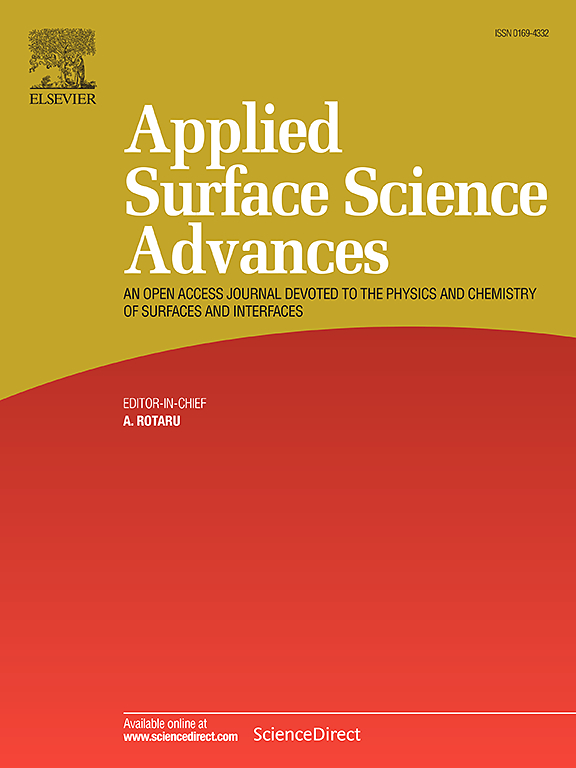Surface modification of AISI 316 L stainless steel with polyvinyl alcohol/chitosan/sol-gel bioactive glass coating by electrospinning method
IF 8.7
Q1 CHEMISTRY, PHYSICAL
引用次数: 0
Abstract
AISI 316 L stainless steel has several applications in biomedical implants owing to its good corrosion resistance and mechanical properties. However, 316 L stainless steel alone may not provide sufficient biocompatibility. Hence, surface modifications such as biocompatible coatings are considered to improve the biocompatibility of implants. In this research, electrospinning composite solutions were prepared by blending a polymer solution of PVA/Chitosan (60:40 wt. %, respectively) non-calcined sol-gel-derived bioactive glass (BG-gel) at different volume percentages (Polymer solution/ BG sol: 100:0, 90:10, 85:15, 80:20) and named B0, B10, B15, and B20, respectively, and then coated on a polished AISI 316 L stainless steel substrate. The electrospinning of the samples was continued for 1 h with the following parameters: voltage = 25 kV, distance = 15 cm, and flow rate = 0.1 ml/h. The average diameter and distribution of nanofibers, chemical analysis, and wettability of the sample surface were characterized by FESEM, FTIR, and contact angle tests. In addition, bioactivity tests for all samples and viability tests of MG-63 osteoblast-like cells were performed for the B0 and B15 samples; also, cell attachment in these two samples was observed by FESEM images after 1 day of cultivation. Results indicate thinner and smoother fibers with an average fiber diameter of 157 nm for B0 and thicker fibers with at least a 120 nm increase in average fiber diameter in other samples in the presence of BG-sol. The contact angle evaluation of the samples shows contact angles of 21.0°, 21.4°, 17.0°, and 41.7° for B0, B10, B15, and B20, respectively. In addition, the bioactivity test revealed more hydroxyapatite nucleation upon the addition of more BG-sol to the composite solution. The cell viability results of the B0 and B15 samples show the same range of at least 93 % viability, which proves the low cytotoxicity and good biocompatibility of both samples. FESEM images of MG-63 cell attachment for B0 and B15 show good biocompatibility for both samples; especially for B15, which shows good spread and adhesion of multipolar stellate-shaped cells.
聚乙烯醇/壳聚糖/溶胶-凝胶生物活性玻璃涂层静电纺丝法对AISI 316l不锈钢进行表面改性
AISI 316l不锈钢具有良好的耐腐蚀性和机械性能,在生物医学植入物中有多种应用。然而,单独使用316l不锈钢可能无法提供足够的生物相容性。因此,表面修饰如生物相容性涂层被认为可以改善植入物的生物相容性。在本研究中,将PVA/壳聚糖(60:40 wt. %)的聚合物溶液以不同体积百分比(聚合物溶液/ BG溶胶:100:0,90:10,85:15,80:20)混合,分别命名为B0, B10, B15和B20,制备静电纺丝复合溶液,然后涂覆在抛光的AISI 316 L不锈钢衬底上。在电压为25 kV,距离为15 cm,流速为0.1 ml/h的条件下,继续静电纺丝1h。通过FESEM、FTIR和接触角测试表征了纳米纤维的平均直径和分布、化学分析以及样品表面的润湿性。此外,对所有样品进行生物活性测试,对B0和B15样品进行MG-63成骨样细胞活力测试;培养1 d后,用FESEM图像观察两种样品的细胞附着。结果表明,在BG-sol的存在下,B0的纤维更细、更光滑,平均纤维直径为157 nm,而其他样品的纤维更粗,平均纤维直径至少增加了120 nm。样品的接触角评估显示,B0、B10、B15和B20的接触角分别为21.0°、21.4°、17.0°和41.7°。此外,生物活性测试表明,在复合溶液中加入更多的BG-sol,羟基磷灰石成核更多。B0和B15样品的细胞活力均在93%以上,证明了两种样品具有较低的细胞毒性和良好的生物相容性。MG-63细胞与B0和B15黏附的FESEM图像显示,两种样品均具有良好的生物相容性;特别是B15,多极星状细胞具有良好的扩散和粘附性。
本文章由计算机程序翻译,如有差异,请以英文原文为准。
求助全文
约1分钟内获得全文
求助全文

 求助内容:
求助内容: 应助结果提醒方式:
应助结果提醒方式:


